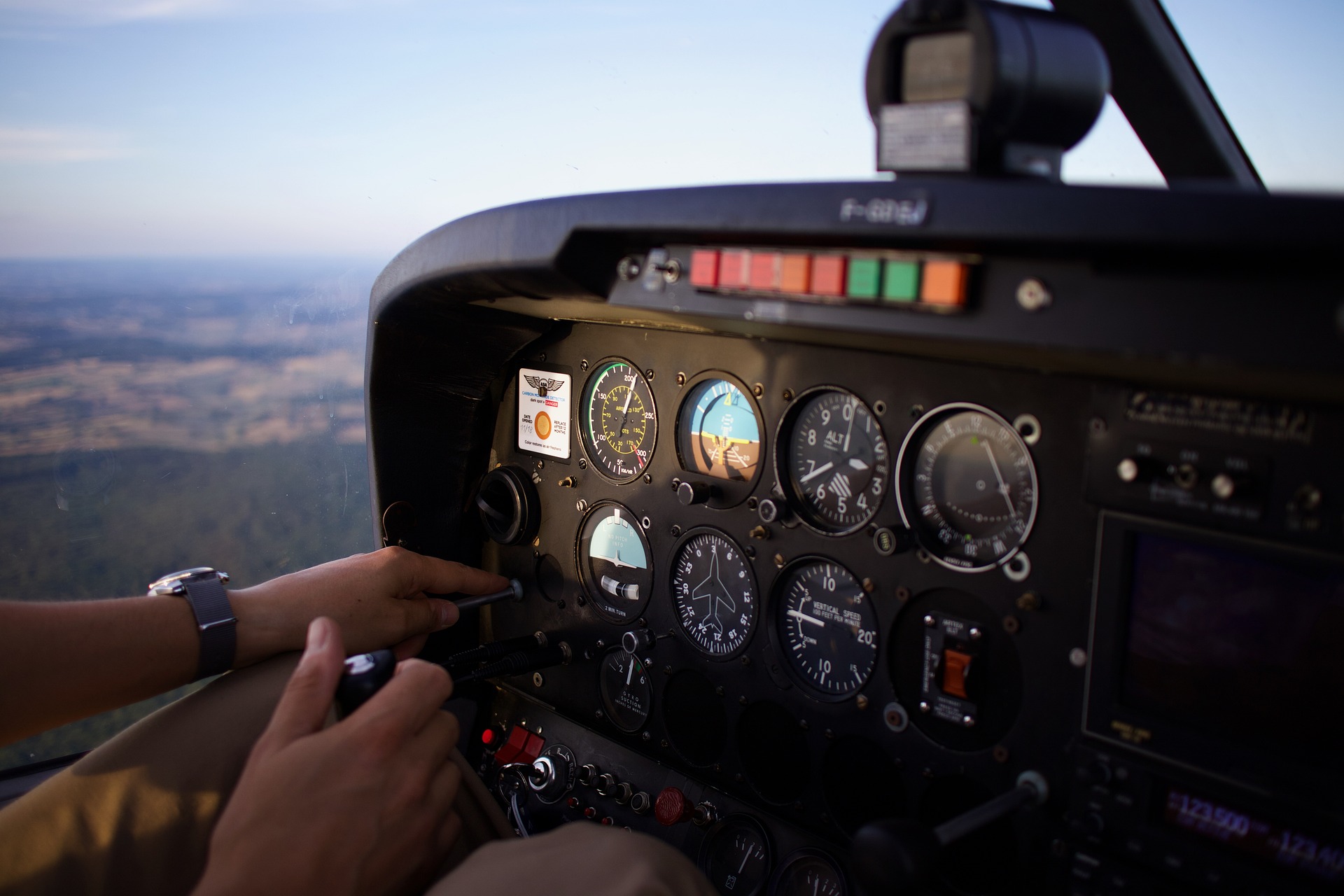Discover the opportunities for flight training in Germany
For people residing in Germany and fluent in English, flight training opens up exciting career opportunities. Without prior experience or specialized training, aspiring pilots and aircraft mechanics can gain a foothold in this dynamic industry. The training provides candidates with the necessary skills for a variety of roles and opens up a world of opportunities in aviation.

Germany has long been recognized as a hub for aviation excellence in Europe, combining rigorous training standards with modern facilities and experienced instructors. The country’s aviation sector benefits from a well-developed infrastructure, close ties to major airlines, and adherence to European Aviation Safety Agency (EASA) regulations. For individuals passionate about flight, Germany presents numerous pathways to enter the aviation industry, whether through pilot training programs or technical training for aircraft maintenance and engineering roles.
The German aviation training system emphasizes safety, precision, and technical competence, qualities that are highly valued in the global aviation community. Flight schools across the country offer training that meets international standards, making German aviation qualifications recognized worldwide. This recognition opens doors not only within Europe but also in aviation markets across the globe, providing graduates with flexibility in their career choices.
Comprehensive Flight Training Programs in Germany
Flight training in Germany typically follows EASA guidelines, which standardize pilot licensing across European Union member states. Aspiring pilots can pursue several license types depending on their career goals. The Private Pilot License (PPL) serves as an entry point for recreational flying and requires a minimum of 45 flight hours, including solo flights and cross-country navigation. This license allows holders to fly small aircraft for non-commercial purposes.
For those seeking professional aviation careers, the Commercial Pilot License (CPL) represents the next step. This qualification requires approximately 200 flight hours and includes advanced training in navigation, meteorology, flight planning, and aircraft systems. Many flight schools in Germany offer integrated training programs that combine theoretical instruction with practical flight experience, streamlining the path from beginner to commercial pilot.
The Airline Transport Pilot License (ATPL) stands as the highest pilot certification level, required for captains operating commercial aircraft. ATPL training builds upon CPL qualifications and includes extensive theoretical coursework covering 14 subject areas, along with additional flight hours and simulator training. German flight schools often partner with airlines to provide cadet programs, where students receive structured training with potential employment opportunities upon completion.
Career Opportunities in the Aviation Industry
The aviation industry in Germany offers diverse career paths beyond traditional airline pilot roles. Regional carriers, cargo operators, charter services, and corporate aviation all require qualified pilots. Additionally, opportunities exist in flight instruction, aerial surveying, emergency medical services, and agricultural aviation. The demand for pilots fluctuates with economic conditions and industry growth, but long-term projections suggest continued need for qualified aviation professionals as air travel expands globally.
Aircraft mechanics and maintenance technicians also play critical roles in aviation safety and operations. These professionals ensure aircraft remain airworthy through regular inspections, repairs, and component replacements. Germany’s aerospace manufacturing sector, which includes major companies and numerous suppliers, creates additional employment opportunities for individuals with technical aviation training.
Aviation management, air traffic control, and airport operations represent alternative career paths for those interested in the industry without pursuing flight training. These roles require specialized education and training but offer stable career prospects within the aviation ecosystem. Understanding the full spectrum of aviation careers helps individuals align their training choices with their long-term professional goals.
Training Paths for Aircraft Mechanics and Pilots
Aircraft maintenance training in Germany follows EASA Part-66 regulations, which define the standards for aircraft maintenance license holders. Training programs typically last between two to four years, combining classroom instruction with practical workshop experience. Students learn about aircraft systems, powerplants, avionics, materials, and maintenance procedures. Upon completion, graduates can pursue licenses in various aircraft categories, including airplanes, helicopters, and avionics systems.
Vocational training centers and technical colleges across Germany offer aircraft mechanic programs, often in collaboration with aerospace companies. These partnerships provide students with hands-on experience working with actual aircraft and exposure to industry practices. The dual education system, which combines classroom learning with workplace training, is particularly strong in Germany and benefits aviation maintenance students.
Pilot training pathways vary depending on individual circumstances and career objectives. Modular training allows students to complete licenses in stages, fitting training around other commitments and spreading costs over time. Integrated training programs offer a structured, full-time approach that takes students from no flying experience to commercial pilot license in approximately 18 to 24 months. Each approach has advantages, and prospective students should carefully consider their financial situation, time availability, and learning preferences when selecting a training path.
Selecting the Right Flight School
Germany hosts numerous flight schools, ranging from small clubs offering basic training to large academies with comprehensive programs and modern fleets. When evaluating flight schools, prospective students should consider several factors: EASA approval status, instructor qualifications, aircraft fleet condition and variety, training curriculum comprehensiveness, safety record, and graduate employment rates.
Visiting flight schools in person provides valuable insights into facilities, aircraft maintenance standards, and organizational culture. Speaking with current students and recent graduates offers perspectives on training quality and career support services. Location also matters, as weather conditions affect training schedules and costs. Schools in southern Germany generally experience more favorable flying weather compared to northern regions, potentially reducing training delays.
Accreditation and partnerships with airlines or aerospace companies can enhance training value and career prospects. Some flight schools maintain connections with employers, facilitating job placements for graduates. Others offer specialized training modules, such as multi-engine ratings or instrument flight training, which improve employability in competitive markets.
Financial Considerations and Investment
Aviation training represents a significant financial investment. Private pilot licenses typically cost between 8,000 and 12,000 euros, while commercial pilot training ranges from 60,000 to 100,000 euros depending on the program type and school. Airline transport pilot license preparation adds further costs. Aircraft mechanic training through vocational programs is generally less expensive, often with costs covered partially or fully through apprenticeship arrangements with employers.
Various financing options exist to support aviation training. Some students secure bank loans specifically designed for pilot training, while others utilize government education financing programs. Scholarships and grants from aviation organizations, airlines, and foundations provide additional funding sources, though competition for these opportunities can be intense. Part-time work during modular training helps some students manage costs, though this extends the overall training timeline.
Prospective students should develop comprehensive budgets that include not only tuition but also examination fees, medical certificates, study materials, accommodation, and living expenses. Understanding the full financial commitment helps prevent interruptions to training due to funding shortfalls, which can delay license completion and increase overall costs.
Regulatory Requirements and Medical Standards
All pilot candidates must obtain medical certificates appropriate to their license level. Class 1 medical certificates, required for commercial pilots, involve comprehensive examinations including vision, hearing, cardiovascular health, and psychological assessment. Class 2 medical certificates for private pilots have less stringent requirements. Medical standards are strictly enforced to ensure flight safety, and certain conditions may disqualify candidates from pursuing pilot careers.
Beyond medical requirements, pilot training involves extensive theoretical examinations covering subjects such as air law, aircraft general knowledge, flight performance and planning, human performance and limitations, meteorology, navigation, operational procedures, and principles of flight. These examinations are standardized across EASA member states and require thorough preparation. Practical flight tests assess piloting skills, emergency procedures, and decision-making abilities under various conditions.
Aircraft maintenance personnel also face regulatory requirements, including background checks and ongoing competency assessments. Maintaining current licenses requires continuing education and periodic renewals, ensuring professionals remain updated on evolving technologies and procedures throughout their careers.
Germany’s commitment to aviation excellence, combined with its comprehensive training infrastructure and international recognition, makes it an attractive destination for individuals pursuing aviation careers. Whether aspiring to pilot commercial aircraft or maintain them, understanding available training programs, career opportunities, and requirements provides a solid foundation for making informed decisions about entering this challenging and rewarding industry.




